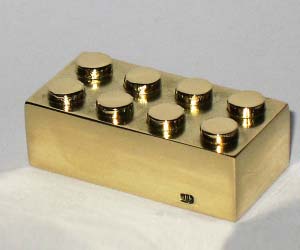And finally… Worth its weight in gold
Secondary market prices of retired LEGO sets can generate higher returns than gold, stocks, and bonds, HSE University economists say.

A paper published in the Research in International Business and Finance journal said LEGO investments can grow by as much as 11% annually.
There may be several reasons for the rapid growth in the price of the sets. First, they are produced in limited quantities, particularly special collections dedicated to iconic films, books, or historic events. Second, after sets are retired, the number of them available on the secondary market is not large: many owners don’t see value in them (and lose or toss parts), while others, on the contrary, value them and don’t want to sell them.
Third, LEGO sets have been produced for several decades and have a lot of adult fans. It would be reasonable to assume that the more time has passed since the set was manufactured, the more it would be valued as a classic sample or a nostalgic object. However, there had been no academic studies to substantiate this assumption.
The authors of the paper looked at the prices of 2,322 LEGO sets from 1987-2015. The dataset included information on primary sales and online auction transactions (only sales of new unopened sets were selected). Secondary market prices usually start to grow two or three years after a set is retired, but there is a significant variation in returns ranging from -50% to +600% annually. Prices of small and very big sets grow faster than prices of medium-sized ones, probably because small sets often contain unique parts or figures, while big ones are produced in small quantities and are more attractive to adults.
Prices of thematic sets dedicated to famous buildings, popular movies, or seasonal holidays tend to experience the highest growth on the secondary market (the most expensive ones include Millennium Falcon, Cafe on the Corner, Taj Mahal, Death Star II, and Imperial Star Destroyer). Another attractive category includes sets that were issued in limited editions or distributed at promotional events: rarity increases their value from the collectors’ perspective.
In addition, LEGO prices are weakly dependent on the stock market (they were growing even during the financial crisis of 2008) and are relatively low in comparison to art, antiques, and cars, which makes them a reliable and accessible method of investment. However, the authors of the study say that investment in LEGO is worthwhile only in the long term (i.e., over three years) and incurs higher transaction costs (e.g., delivery and storage) than investment in financial securities.
“Investors in LEGO generate high returns from reselling unpacked sets, particularly rare ones, which were produced in limited editions or a long time ago. Sets produced 20-30 years ago make LEGO fans nostalgic, and prices for them go through the roof. But despite the high profitability of LEGO sets on the secondary market in general, not all sets are equally successful, and one must be a real LEGO fan to sort out the market nuances and see the investment potential in a particular set,” Victoria Dobrynskaya said.



















